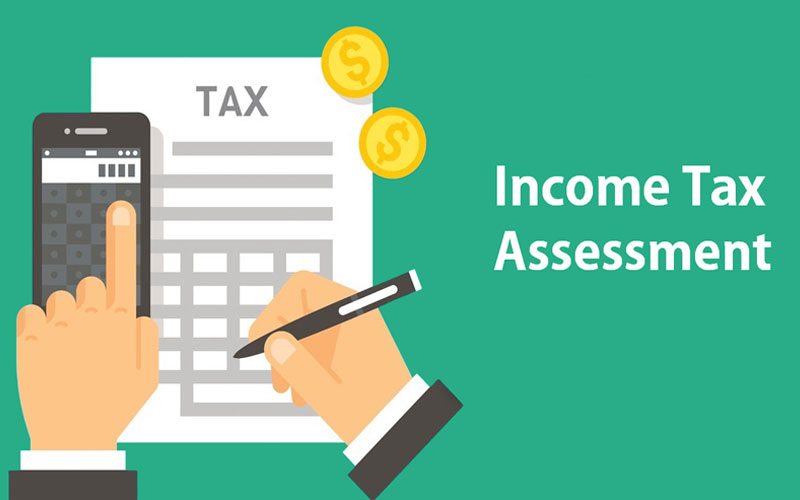Income Tax Assessment

Income Tax Assessment
Filing income tax returns and understanding the subsequent Income Tax Assessment process can often be overwhelming. Whether you're an individual taxpayer, a business owner, or a professional, clarity on the assessment process is crucial for compliance and avoiding penalties. At Whytax, we not only assist you in smooth filing but also provide expert guidance throughout the entire Income Tax Assessment process.
What is Income Tax Assessment?
Income Tax Assessment refers to the process through which the Income Tax Department reviews, verifies, and finalizes the income details you declare in your tax return. Once you file your returns, the department assesses your declared income, deductions, and taxes paid to determine the accurate tax liability or refund due.
The assessment ensures that the correct amount of tax is paid and helps the government in maintaining the integrity of the tax system.
Types of Income Tax Assessment
Understanding the different types of assessments helps taxpayers respond promptly and avoid legal issues. The common types include:
1. Summary Assessment (Section 143(1))
This is an initial, automated assessment where the department checks for any arithmetic errors or incorrect claims in your return.
2. Regular Assessment (Scrutiny Assessment) (Section 143(3))
This involves a detailed examination of your tax return to verify the accuracy of income and deductions claimed. It’s usually triggered by inconsistencies or high-value transactions.
3. Best Judgment Assessment (Section 144)
If a taxpayer fails to file returns or provide information, the department estimates income and tax liability based on available data.
4. Reassessment or Income Escaping Assessment (Section 147)
If new information comes to light suggesting income was not fully disclosed, reassessment can be initiated within a specified period.
Penalty for Non-Filing of Income Tax Returns
Failure to file your income tax returns timely can lead to various penalties, including:
• Late Filing Fees: Up to ₹10,000 depending on the delay period.
• Interest Charges: On the outstanding tax amount under Section 234A, 234B, and 234C.
• Prosecution: In extreme cases, with willful evasion, legal action can be taken.
• Loss of Refunds: Delay or non-filing can delay your tax refunds.
• Restrictions: Non-filing may limit your ability to carry forward losses or claim certain deductions.
When is the Income Tax Assessment Order Issued?
The Income Tax Assessment Order is typically issued after the department completes its review, which can happen:
• Within 9 months from the end of the financial year for summary assessments.
• Within 6 months from the end of the assessment year for scrutiny assessments.
• Within prescribed limits (usually 3 to 6 years) for reassessments, depending on the case.
How to Obtain Income Tax Assessment Order Online?
The Income Tax Department has simplified access by providing online facilities to view your assessment status and orders:
1. Visit the official Income Tax e-filing portal https://www.incometax.gov.in
2. Log in with your PAN and password.
3. Navigate to the “e-Proceedings” or “My Account” section.
4. Access your assessment orders and notices.
5. Download the order for your records.
Conclusion
Income Tax Assessment is a critical part of your financial compliance journey. Understanding the process and deadlines can save you from unnecessary stress and penalties. Partner with Whytax to navigate this complex process effortlessly.
Contact us today for a consultation and experience professional support in your income tax filing and assessment!
FAQs on Income Tax Assessment
Q1: What is an Income Tax Assessment?
It is the process where the Income Tax Department verifies the details submitted in your income tax return to confirm the correct tax liability or refund.
HQ2: What are the different types of income tax assessments?
The main types include Summary Assessment, Regular (Scrutiny) Assessment, Best Judgment Assessment, and Reassessment for escaped income.
How will I know if my income tax return is selected for scrutiny?
You will receive a notice from the Income Tax Department if your return is selected for detailed scrutiny. This usually happens if there are discrepancies or high-value transactions.
Q4: What happens if I don’t file my income tax return on time?
You may face late filing fees, interest on unpaid taxes, potential legal action, and loss of certain benefits such as carrying forward losses.
Q5: Can I file my income tax returns after the deadline?
Yes, you can file a belated return within one year from the end of the relevant assessment year, but penalties and interest may apply.
Q6: How can I check the status of my income tax assessment online?
You can log into the Income Tax Department’s e-filing portal and check your assessment status under the ‘My Account’ or ‘e-Proceedings’ section.
Q7: What should I do if I receive an assessment notice?
Don’t panic. Read the notice carefully and respond within the specified time. You can also seek professional help to respond appropriately and avoid penalties.
Q8: How long does the Income Tax Department take to complete an assessment?
Summary assessments are usually completed within 9 months of the financial year’s end, while scrutiny assessments may take up to 6 months from the date of notice. Reassessments vary depending on the case.
Q9: Can I appeal against the assessment order?
Yes, if you disagree with the assessment order, you have the right to file an appeal within the prescribed time frame.
Q10: Why should I hire professional services for income tax assessment?
Professional tax experts ensure accurate filing, timely response to notices, minimize penalties, and handle complex tax matters efficiently, saving you time and stress.
